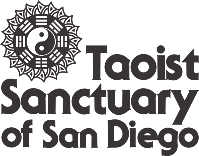What is Tao?
To be able to discuss the question “What is Tao?” we must first turn to chapter one of Lao Tzu’s Tao Te Ching. In chapter one, he clearly delineates that “Tao can be talked about but not the eternal Tao.” That is, we can discuss Tao endlessly, but we can never encompass the eternal Tao in words. In chapter forty-two the essence of this dilemma is described as “Tao gave birth to One, One gave birth to Two.”
As the eternal, unspeakable Tao, it gave rise to Oneness. We can say that this unity, the undifferentiated reality. Another way of describing this state is by saying before the beginning. That is, before any differentiation or manifestation there was Tao.
In chapter fourteen, Lao Tzu states: “its name is formless., its name is soundless., its name is incorporeal; these three attributes are unfathomable; therefore they fuse into one.”The Tao as formless, soundless incorporeal is always beyond manifestation and symbolic representation, what we can speak of is the Tao in its activities as the two, as the interaction of yin and yang. Of these two much can be said.
In chapter two Lao Tzu describes their interaction in the polarity of concepts, and interdependence and relativity of descriptive evaluation.
“Difficult and easy., long and short., high and low.”
Once the Tao manifests it is characterized by relativity and interdependence.
The crucial difference between Confucius and Lao Tzu is their attitude toward self-cultivation. For Confucius with his emphasis on learning, self-cultivation by method of “rectifying the heart,” the evolving human must make an effort to develop the “good qualities of their nature.”
For Lao Tzu, this approach is short of the mark. It emphasizes an attitude of acquiring more relativity.
In chapter forty-four he states “.an excessive love for anything will cost you dear in the end.” The secret to happiness is “to know when you have enough., to know when to stop is to be preserved from perils.” To avoid troubles and problems involves the muting of desire, the blunting of excess.
To Lao Tzu the Confucian method is excessive, it creates problems by preferring the “good to the bad,” by over emphasizing the effort of “self-cultivation.” For Lao Tzu the method of happiness lies in attuning and aligning oneself to the eternal principle of the Tao as it manifests through you and all other manifestation. In order to do this we must eliminate desire and attachment, and practice “daily diminishing.”
In chapter forty-eight he states “Learning consists of daily accumulating; the practice of Tao consists in daily diminishing.” This emphasis rests upon the belief that if we remove the cultural conditioning and desires, that our essential nature is perfect as it is, that is does not require additional learning but rather constant un-learning. This un-learning and diminishing is complete when we reach the state of wu-wei, non intentional action. In this state the sage or perfected human naturally expresses virtues, practices non-action and is the only person truly fit to govern because he has no desire and self-interest.
In chapter twelve the specifics of the sage’s practice are stated as being the practice of “taking care of the belly, not the eye.” This means that the sage focuses in his belly (Tan-Tian) and not upon the delight of the senses which blind, deafen and obscure the experience of Tao. When the sage has done this, the omniscient quality of the eternal Tao becomes active in the sage and he becomes able to manifest virtue and knowledge as a natural consequence of his level of consciousness.
Lao Tzu describes this in chapter forty-seven “without going out your door you can know the ways of the world.” This virtue of wu-wei finds it highest expression in helping others, in chapter sixty-four “ the Sage desires to be tireless., learns to unlearn his learning, and induces the masses to return from where they have overpassed. He only helps creatures to find their own nature, but does not venture to lead them by the nose.” For Lao Tzu this is the perfect manifestation of the Tao.
Read more
Circle of Tao
Ageless Wisdom for a Modern World
22 Questions on Taoism

